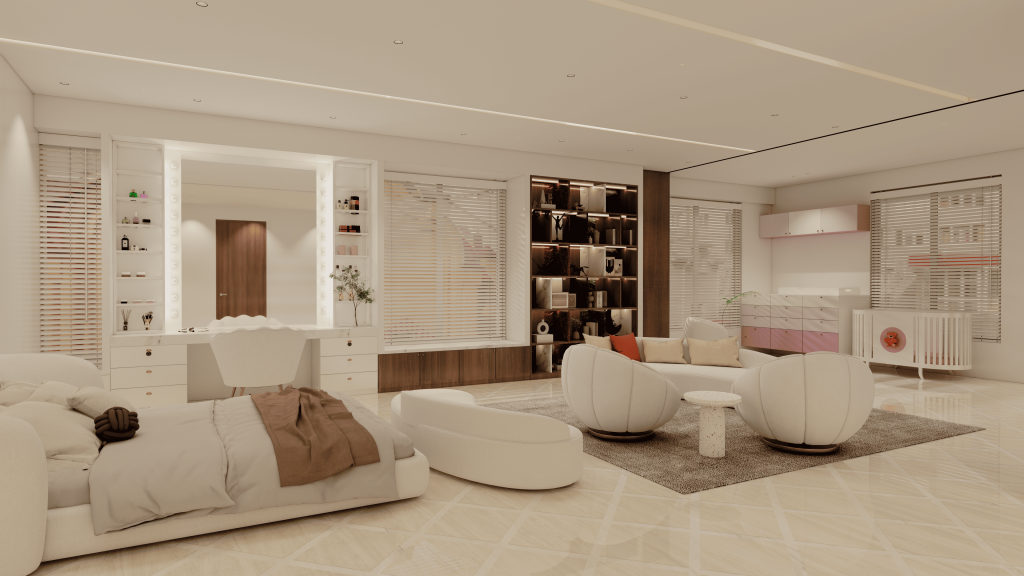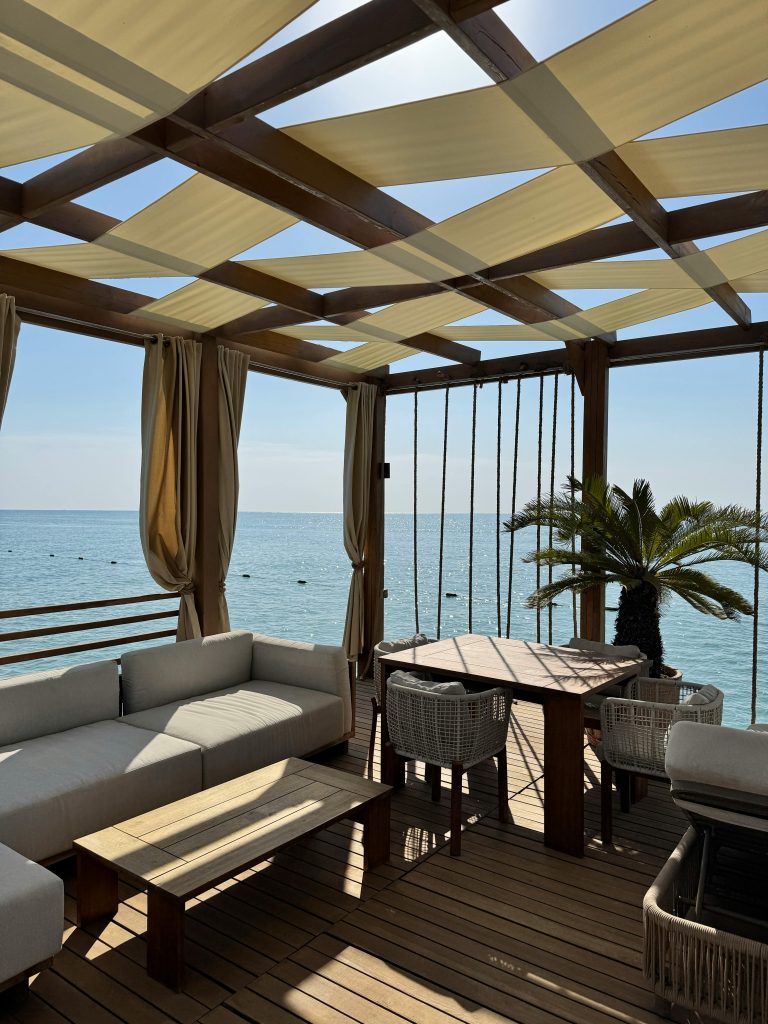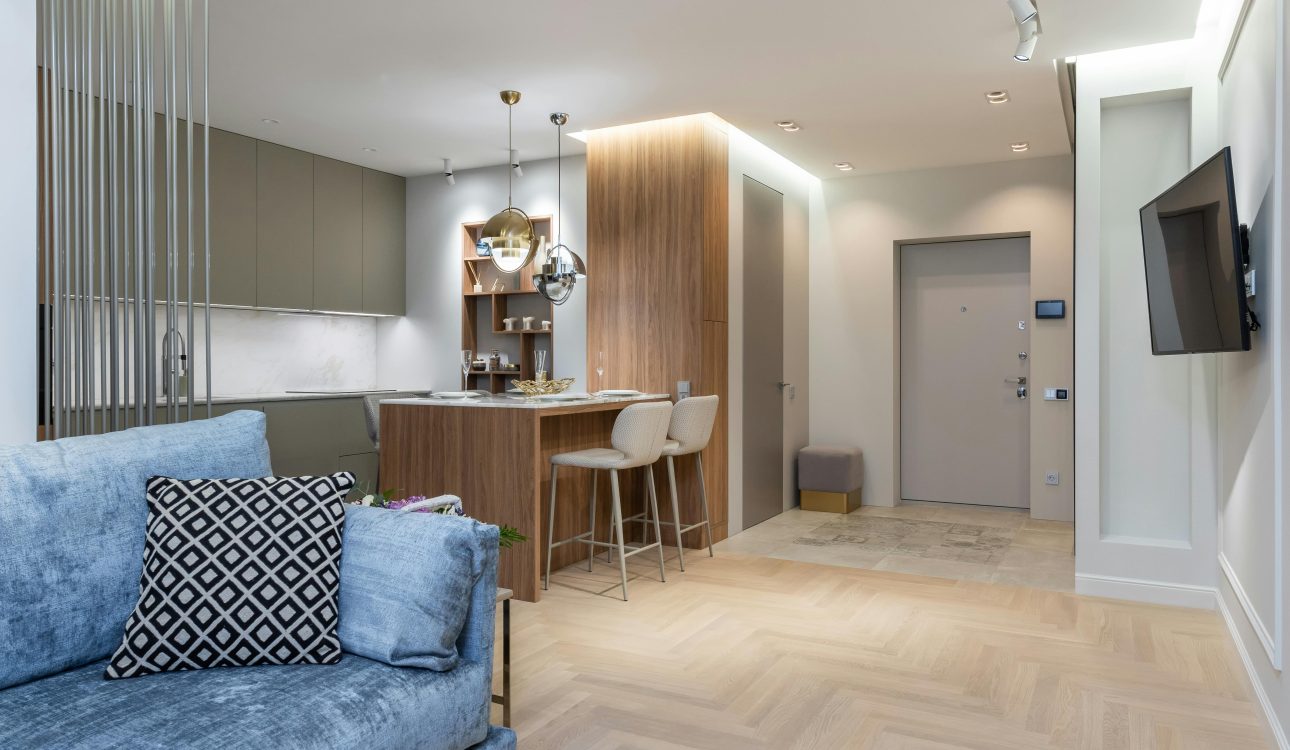Vastu Shastra, the ancient Indian science of architecture, harmonizes physical spaces with cosmic energies to create homes that support well-being, prosperity, and peace. In today’s fast-paced life, applying Vastu principles to your home interior design can help restore balance, invite positivity, and promote harmonious living. Whether you’re building a new home or redesigning an existing one, this guide offers room-wise, element-specific, and expert-backed tips for incorporating Vastu into your interiors without compromising on style or function.
Vastu Shastra for the Main Entrance (The Energy Gateway)
- Ideal Direction: North, East, or Northeast.
- Design Tip: Keep the area clean, well-lit, and clutter-free. Use wooden or metal doors depending on direction. Avoid placing shoe racks directly in front of the entrance.
- Decor Suggestion: A nameplate and a threshold (toran or rangoli) invite good energy. Avoid mirrors facing the door.

Vastu for Living Room (The Social Energy Hub)
- Best Direction: Northeast or North.
- Furniture Layout: Keep heavy furniture in the South or West. Place seating so guests face east or north.
- Wall Colors: White, cream, beige, or pastel tones for peace and vibrancy.
- Avoid: Dark, aggressive colors and beams running across seating areas.
- Additions: Green indoor plants (like bamboo or money plants) to enhance prosperity and freshness.
Vastu for Kitchen (The Source of Health & Wealth)
- Ideal Direction: South-East (Agni corner).
- Cooking Direction: Face East while cooking.
- Appliance Placement:
- Stove: Southeast
- Water Purifier/Sink: Northeast
- Refrigerator: Southwest
- Avoid: Kitchen in the Northeast (brings health issues).
- Wall Colors: Orange, red, and yellow—symbolic of fire and nourishment.
Vastu for Bedroom (The Zone of Rest & Relationships)
- Master Bedroom: Ideal in the southwest for stability.
- Children’s Bedroom: West or Northwest.
- Guest Room: Northwest.
- Bed Positioning: Head towards South or East.
- Mirror Rule: Avoid placing a mirror directly in front of the bed.
- Colors:
- Couples: Light pink, blue, or green for love and calm.
- Elderly: Earthy tones for grounding.
Vastu for Bathroom and Toilet (Drain Out Negativity)
- Ideal Placement: Northwest or West.
- Avoid northeast bathrooms—they cause health and financial issues.
- Design Points:
- Keep doors closed at all times.
- Use light pastel shades like white, light grey, or sky blue.
- Ensure proper drainage in the north or east direction.
- Fix Leaks: Leaking taps or pipes indicate monetary loss.

Vastu for Puja Room (Spiritual Corner of Your Home)
- Best Direction: Northeast (Ishanya).
- Idol Placement: Should face west or east. Your face should be towards the East while praying.
- Design Elements:
- Use natural stone or wood for temple structures.
- Avoid placing the pooja room below stairs or near washrooms.
- Lighting: Always keep this zone bright and clutter-free.
Vastu for Dining Room (Energy of Nourishment)
- Location: West is considered best; East or Northeast is also favorable.
- Seating Direction: The head of the family should sit facing east.
- Wall Decor: Family photos, food paintings, and mirrors (not directly reflecting the entrance) are auspicious.
- Avoid: Dining table near the entrance door or under a beam.
Vastu for Study Room (Focus, Knowledge & Concentration)
- Ideal Direction: Northeast or East.
- Study Table Position: Place it so the child faces east or north while studying.
- Shelving: Keep the bookshelf in the South or West. Avoid overhead shelves directly above the study table.
- Colors: Yellow, green, or cream enhance intellect and freshness.
Vastu for Staircase (Pathways of Movement)
- Ideal Direction: Southwest, South, or West.
- Avoid: Staircases in the northeast can disturb energy flow.
- Direction of Movement: Always clockwise when ascending.
- Design Note: Use light tones for the staircase walls. Keep the area well-lit and uncluttered.
Vastu for Home Office (Work, Growth & Clarity)
- Location: West or Southwest to build authority and focus.
- Seating: Sit facing east or north. Avoid a seat with a door or window directly behind.
- Desk Decor: Place a citrine crystal or bamboo plant to boost prosperity.
- Wall Art: Motivational quotes and mountain images for stability.

Vastu for Balcony & Outdoor Spaces
- Ideal Direction: North- or east-facing balconies invite sunlight and positive energy.
- Furniture: Light wooden or cane furniture.
- Green Tips: Use tulsi, aloe vera, and flowering plants. Avoid thorny or bonsai plants.
- Avoid: Dumping old items or broken furniture on balconies.
Vastu Colors for Home Interior (Balance of Elements)
- North: Green or blue—aligns with the water element.
- East: White or light blue—good for clarity and growth.
- South: Red and orange—enhances fire energy.
- West: Grey, white—promotes stability and gains.
- Tip: Avoid black for major walls or floors; it attracts negativity.
Vastu Remedies Without Major Renovation
- Use mirrors to deflect negative energy, but not facing the main door.
- Place rock salt bowls in corners to absorb negativity.
- Hang wind chimes with 6 or 8 rods in the northwest to promote harmony.
- Use Vastu pyramids in problematic zones.
- Burn camphor or loban regularly to purify the space.
Conclusion
Vastu interior design is not about superstition—it’s about energy alignment, comfort, and conscious living. When thoughtfully incorporated, Vastu brings a sense of direction and flow into the home. From the layout of your living room to the color of your bedroom walls, each element contributes to your family’s emotional, financial, and spiritual well-being. Remember, Vastu isn’t about perfection—it’s about harmony. Even small, mindful changes can bring profound shifts in energy and mood within your home.
Let your interiors breathe positivity, peace, and prosperity—room by room, corner by corner.

